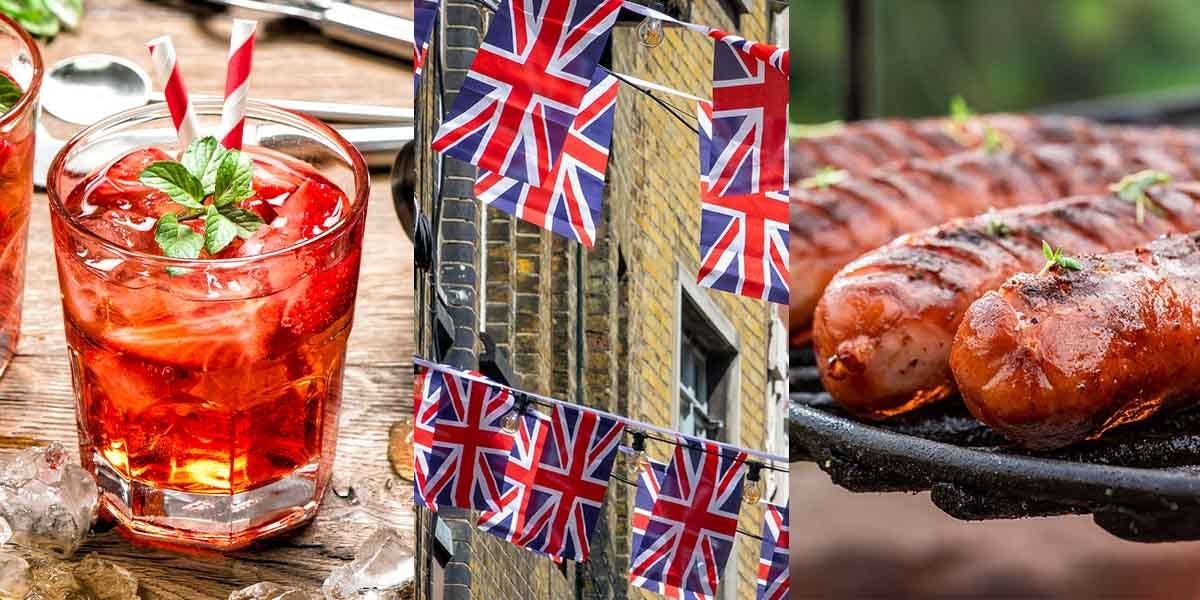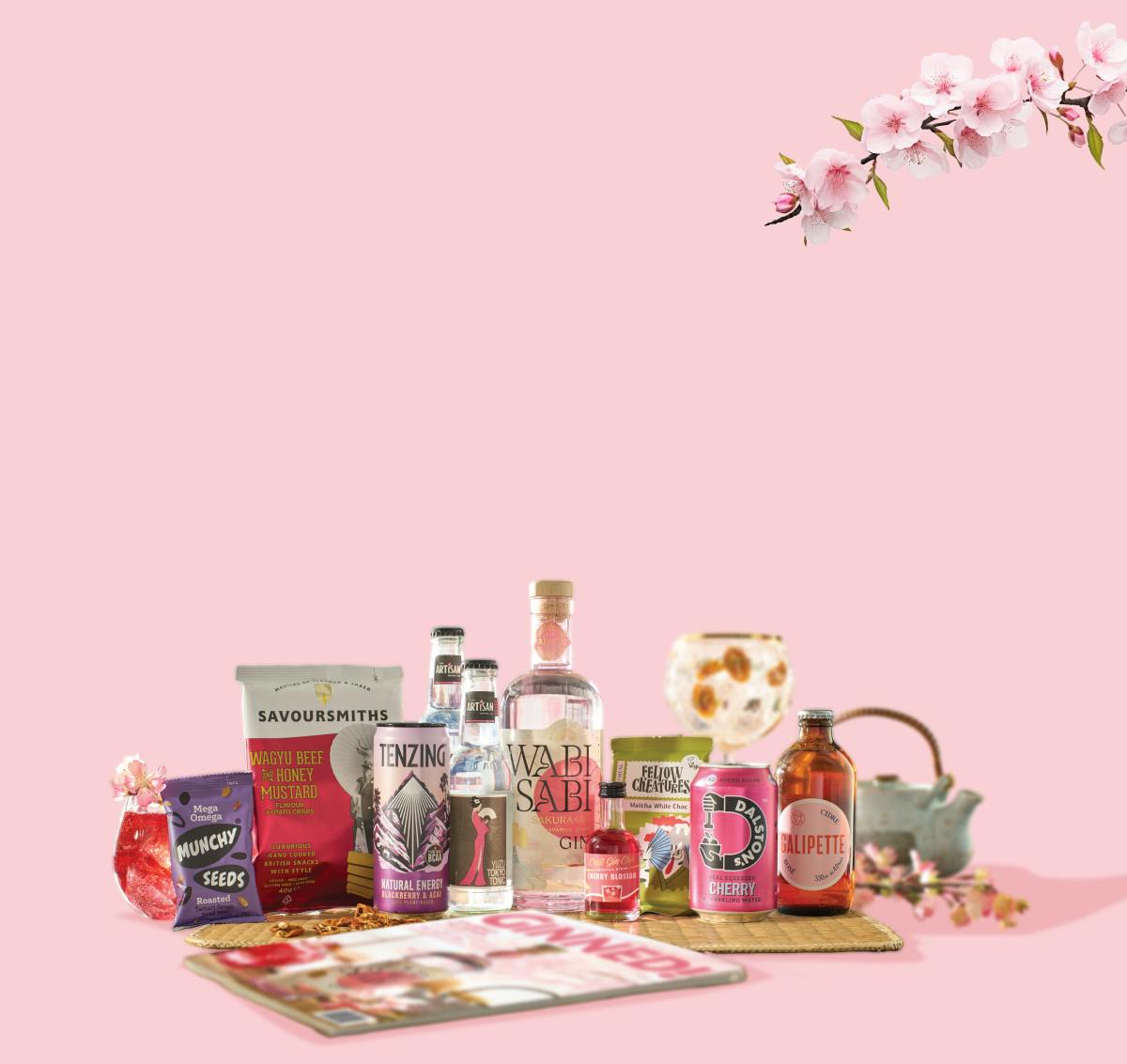Total flexibility, no commitment
A world of unique, crafted spirits
Easy, free and reliable delivery

Are you a gin genius? Find out in our gin quiz!
Do you see yourself as a gin newbie, a gin devotee, or perhaps a fully certified gin genius? Well, now you can find out in our fun ginny quiz. Whether you’re partial to a G&T or two, or have a full blown gin bar and class yourself as a gin cocktail connoisseur - get ready to brush up on your knowledge of the history of gin, classic gin cocktails, and how gin is made.
There are 15 questions about our favourite tipple - so it’s time to swot up and test your gin-eral knowledge! It goes without saying, learning about gin is the one topic we don’t mind geeking up for. If tasting gin is all in the name of homework… then consider us top of the class!
So pour yourself a lovely G&T and get ready to give this a go. It also makes a fun activity to do in the garden with your gin pals now the weather has finally perked up. Let us know how you score - are you a gin genius (or a ginius?!)?
Two things: first, some questions come with a clue - lucky you! Second: answers are at the bottom of the page - no cheating please! Pens at the ready…

Question 1:
The Juniper plants that produce the berries used to make gin are a species of what?
A: Conifer
B: Weed
C: Fern
D: Deciduous tree
Question 2:
What is the second most popular botanical used in gin after juniper?
A: Cloves
B: Coriander
C: Heather
D: Cassia bark

Question 3:
Jenever (or genever), the precursor to modern gin, originated in which country?
A: France
B: Austria
C: America
D: Holland

Question 4:
What’s the name of the sweet style of gin that is sometimes described as the ‘missing link’ between jenever and London Dry?
A: Old Man
B: Old Annie
C: Old Tom
D: Old Age

Question 5:
When did London’s “gin craze”, which saw an epidemic of extreme drunkenness in the capital (provoking moral outrage and a legislative backlash) take place?
A: 17th century
B: 18th century
C: 19th century
D: 20th century

Question 6:
What is the name of this famous illustration by William Hogarth?
A: Gin Lane
B: Gin Market
C: Gin & Sin
D: Gin for everyone!

Question 7:
In March 2020 - March 2021, a record number of gin bottles were sold in the UK. How many bottles of gin did we buy, according to the Wine and Spirit Trade Association?
A: 64 million
B: 90 million
C: 10 billion
D: 80 billion
Question 8
What does it mean if a gin is called ‘London Dry Gin’?
A: A particular production method has been followed to make the gin.
B: The gin was made somewhere within the Greater London area.
C: The gin was produced within the boundaries of the City of London.
D: The gin is less sweet than other types of gin.

Question 9:
Tonic water was drunk by colonial soldiers in 19th-century India because the quinine it contains helps stave off which disease?
A: Mumps
B: Influenza
C: Malaria
D: Chlamydia
Question 10:
The classic Martini is a cocktail made by combining gin with which other ingredient?
A: Vermouth
B: Vodka
C: Champagne
D: Campari

Question 11:
What does a dry shake mean?
A: Shaking a cocktail without a spirit
B: Shaking a cocktail without ice
C: Shaking a cocktail with dry vermouth
D: Shaking a cocktail with egg white

Question 12:
What makes a Martini dirty?
A: Olive brine
B: A dirty glass
C: A chilled glass
D: Angostura Bitters

Question 13:
What cocktail named after an animal does NOT include gin?
A: Bee's Knees
B: Monkey Gland
C: Moscow Mule
D: Salty Dog

Question 14:
What is a common nickname for gin?
A: Mother's Undoing
B: Mother's Delight
C: Father's Fancy
D: Mother's Ruin

Question 15:
What’s the Queen’s favourite cocktail?
A: Gin and Dubonnet
B: Gimlet
C: G&T
D: Sloe Gin Royale
ANSWERS!
Question 1: A: Conifer
Junipers are coniferous plants in the genus Juniperus. The so-called berries are in fact seed cones with unusually fleshy and merged scales, which give them a berry-like appearance.
Question 2: B: Coriander
Coriander appears in almost nine out of ten gins, the vast majority of the time in the form of its seeds, which bring citrus notes along with a warm, spicy tang.
Question 3: D: Holland
Also known as Dutch gin, jenever is the traditional liquor of the Netherlands and is available in two different styles - oude (old) and jonge (young).
Question 4: C: Old Tom
Popular in 18th-century England Old has experienced a resurgence in the craft cocktail movement. It is slightly sweeter than London Dry, but slightly drier than the Dutch Jenever.
Question 5: B: 18th century
At the beginning of the 18th century, the banning of French brandy imports combined with relaxed laws on distilling sprits, led to a huge increase in gin production – and a huge drop in prices. In 1721 Middlesex magistrates described gin as "the principal cause of all the vice & debauchery committed among the inferior sort of people."
Question 6: A: Gin Lane
William Hogarth issued the Gin Lane print in 1751 along with another called Beer Street. Designed to be viewed alongside each other, they depict the evils of the consumption of gin as a contrast to the merits of drinking beer.
Question 7: D: 80 billion
The latest figures from the Wine & Spirit Trade Association (WSTA) reveal that in the 12 months to 27 March 2021 total UK gin sales inched over £2bn, with 80bn bottles sold in supermarkets, shops and online, worth £1.3bn, against £1bn in the preceding 12 months.
Question 8: A: A particular production method has been followed to make the gin.
As long as the botanicals are added during the distilling process rather than being added later as flavourings, and providing no sugar or colourings have been added, gin from anywhere can be called a London Dry.
Question 9: C: Malaria
In the 1700s it was discovered that quinine could be used to prevent and treat malaria, although the bitter taste was unpleasant. The gin and tonic originated in India in the 19th century, when officers in the army of the British East India Company used their gin rations, combined with sugar and lime, to improve the flavour the tonic water they were ordered to drink.
Question 10: A: Vermouth
A classic Martini contains gin (lots), vermouth (a little) and nothing else. It should be very cold, stirred (not shaken, no matter what Bond says) and garnished with either a lemon twist or an olive. Perfection in a glass…
Question 11: B: Shaking a cocktail without ice
A dry shake is when you shake a cocktail without adding ice to the shaker! All the liquids to make the drink are in the shaker, but there’s no ice to chill or dilute it.
Question 12: A: Olive Brine
The term 'dirty' means that olive brine, usually from a jar of cocktail olives, has been added to the drink. If you like savoury drinks, you’ll love this.
Question 13: C: Moscow Mule
The only cocktail made without gin is the Moscow Mule - this cocktail is made with only vodka, spicy ginger beer, and lime juice.
Question 14: D: Mother’s Ruin
By 1733, the average person was apparently drinking 14 gallons of gin per annum! Gin joints allowed women to drink alongside men for the first time and it’s thought this resulted in many women neglecting their children and turning to prostitution, hence gin being known as 'Mother's ruin'.
Question 15: A: Gin and Dubonnet
The former royal chef Darren McGrady has previously reported that the Queen’s favourite tipple of all time is the simple, two-ingredient cocktail: the gin and Dubonnet. Want the recipe? Click here!
How many did you get right?
1-5: You’re a Juniper Junior
Okay, so you’ve got a little more study to do before you graduate to fully fledged gin genius! The good news is, Craft Gin Club is here to help! Follow us on Facebook or browse our blog for lots of amazing ginformation, fun facts, recipes and more - you’ll soon be scoring 100% on the gin knowledge scale!
6-10: You’re a Spirits Scholar
A valiant attempt - you're clearly a gin fan but could do with brushing up on a few things! Sign up to our fun weekly email newsletter and our fascinating features, interviews, how-to guides and cocktail recipes will soon have you mixing and shaking like a gin pro(fessor)!
11-15: You’re a Gin Genius
Congratulations! You truly are a gintelligent gin lover. We bet a master of cocktails like you has got some gorgeous pics of your gin-tastic creations hiding on your camera roll… why not share them with us on Facebook, Twitter, or Instagram and tag us? Hats off to you… you deserve a large G&T. Cheers to that!













